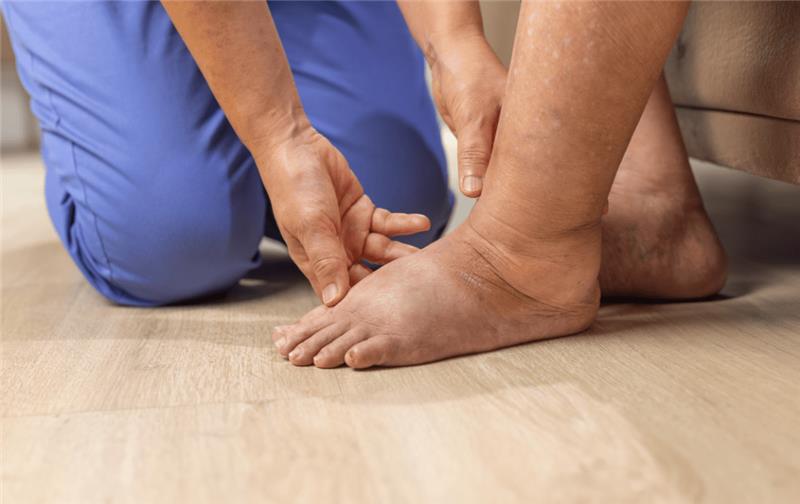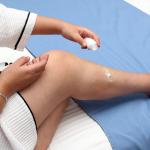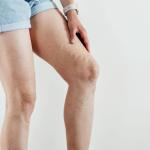
If you’ve noticed persistent swelling in your legs—especially below the knee, around the ankles, or in your feet—it might be more than just poor circulation or a salty meal. For many adults over 45, it’s often lymphedema, a condition where the lymphatic system struggles to properly drain fluid. This leads to chronic swelling, discomfort, and over time, can significantly impact mobility and quality of life.
Unlike temporary puffiness, lymphedema is often progressive, meaning it tends to worsen without proper care. But the good news? You absolutely can manage it. In fact, with the right combination of movement, compression, self-care, and medical support, many people reduce their symptoms significantly.
What Is Lymphedema?
Lymphedema occurs when lymphatic fluid builds up in the tissues due to damage or blockage in the lymphatic system. It commonly affects the legs and may develop gradually over time.
What Exactly Causes Lymphedema in the Legs?
Lymphedema can be primary (genetic) or secondary (caused by another condition or procedure). For adults over 45, secondary lymphedema is most common. Here’s why it happens:
-
Surgery or radiation: Especially related to cancer treatments
-
Injury or infection: Damaging lymph nodes or vessels
-
Chronic venous insufficiency: Weak veins failing to return blood, causing fluid buildup
-
Obesity: Increased pressure slows lymph flow
-
Aging: The lymphatic system simply becomes less efficient with time
Because venous disease and lymphedema often overlap, swelling in the legs should always be evaluated by a medical professional.
Why It Happens in the Legs
If you’re over 45 and noticing persistent swelling in your legs, you’re not alone — and it may be lymphedema. This condition happens when your lymphatic system, which helps drain fluids and filter waste, isn’t working properly. The result? Fluid buildup and swelling, usually in the lower body.
Whether caused by aging, surgery, radiation, or chronic venous insufficiency, lymphedema can worsen over time — but the good news is, there’s a lot you can do about it.
Symptoms of Lymphedema in Legs
Recognizing symptoms early can make treatment more effective. Common signs include:
-
Persistent swelling in one or both legs
-
A sensation of heaviness or tightness
-
Aching or reduced range of motion
-
Skin changes, such as thickening or hardening
-
Increased risk of skin infections
Early Signs You Shouldn’t Ignore
Lymphedema often starts subtly. You might notice one sock leaves a deeper imprint than the other. Or that one shoe feels tighter, even though your weight hasn’t changed. A common early sign is a sensation of heaviness or tightness in one leg. As it progresses, the swelling becomes more visible and may feel firm or even rubbery.
Ignoring the early signs is tempting, but risky. Left untreated, the condition can worsen into fibrosis (hardening of tissues), recurrent infections, or even skin ulcers. That’s why it’s vital to recognize the signs and act early.
Is Lymphedema Curable?
There’s no permanent cure yet for lymphedema, but that doesn’t mean you’re stuck. Think of it more like managing high blood pressure or arthritis. It’s a long-term condition, but it can absolutely be controlled—often with simple, sustainable lifestyle changes. With a bit of structure, most people experience fewer flare-ups, less discomfort, and far better mobility.
Could Lymphedema Be Chronic Venous Insufficiency?
Many people assume their leg swelling is purely lymph-related, but there’s a huge connection between lymphedema and venous insufficiency — and it’s more common than you think. Chronic Venous Insufficiency (CVI) happens when the valves in your leg veins stop working efficiently. This leads to blood pooling in the lower legs and increased pressure in the surrounding tissues, which often triggers or worsens lymphedema.
Over time, this backed-up pressure forces fluid out of the veins and into the surrounding tissues. That fluid overload becomes too much for your already-slow lymphatic system to handle. The result? Persistent swelling, skin thickening, heaviness, and in severe cases, leg ulcers or discoloration.
What If CVI Is Diagnosed?
If a vein doctor confirms that venous insufficiency is contributing to your swelling, they may recommend one or more of the following:
-
Targeted compression therapy
-
Lifestyle changes like leg elevation and walking
-
Vein procedures such as ablation or sclerotherapy to close faulty veins
-
Lymphedema management in tandem with vascular care
Many modern vein treatments are minimally invasive and done in-office with little to no downtime. In many cases, addressing the vein issue leads to a noticeable reduction in swelling, pressure, and fatigue in the legs — sometimes within days.
When to See a Doctor for Lymphedema
If you’re struggling with swelling, heaviness, or discomfort in your legs, you don’t have to live with it. Contact USA Vein Clinics today to schedule a consultation and learn more about treatment options for lymphedema and vein disease. Find a clinic near you and start your journey to healthier legs.





